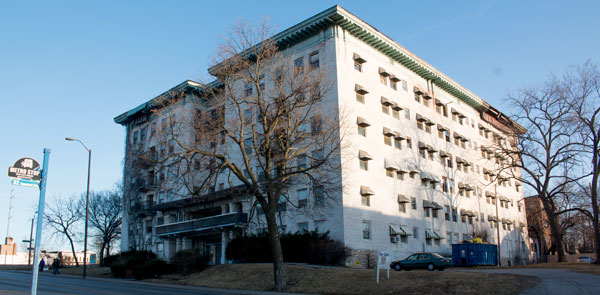
A hulking white building at 911 E. Linwood was in the news this week, with a developer successfully requesting assistance to overhaul it. The building – formerly a hotel, a nursing home and a government headquarters – is now slated to reopen as market-rate apartments in 2017.
According to the Kansas City Star, developer Ted Sleder says the building is eligible for the National Register of Historic Places. It is by far the largest structure on the south side of Linwood Boulevard in the block between 33rd Street, Campbell and Harrison, the focus of this week’s look back in time.
As part of our Uncovering History Project, the Midtown KC Post is examining each block in Midtown. A set of 1940 tax assessment photos is available for many blocks.
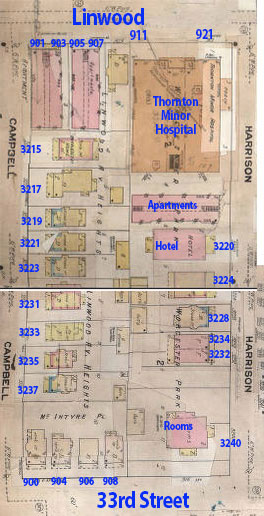
The block from Linwood to 33rd, from Harrison to Campbell, in a 1909-1950 Sunburn Fire Insurance map.nursing home and a government headquarters – is now slated to reopen as market-rate apartments in 2017.
A Long and Diverse History
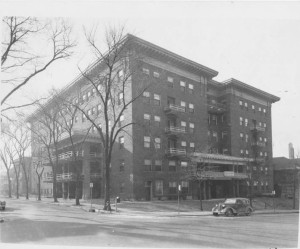
A 1940 photo of the building looking much the same. It was then known as the Lucerne Hotel
The building at 911 E. Linwood goes back to the early 20th century. The owners of the Belmont Hotel, which had been downtown at 303 W. 9th Street, bought the lot at the southwest corner of Linwood and Harrison from Congregation B’nai Jehudah. W.A. Michaels also purchased the adjoining lot, paying $20,000 for a tract with 138 feet of frontage on Linwood and 2015 feet on Harrison.
Sometime later, the building became known as the Lucerne Hotel, as it was in 1949 when it was converted to a specialty hospital, Thornton Minor Hospital, which billed itself as “the oldest known institution specializing in the treatment of rectal and colonic troubles.” The hospital was founded in 1877 and claimed to have drawn patients from around the world.
In a 1949 newspaper ad, Thornton Minor announced its move to Linwood and Harrison.
“Ever since Dr. Thomas W. Thornton began treating his patients in his West 10th Street residence back in 1877, a home like this one for the Thornton Minor has always been our goal. Not so long ago, we were able to purchase the Lucerne Hotel at Linwood and Harrison. Since then, we’ve been busy remodeling this huge fireproof building to provide all the things for our patients that years of experience tell us are necessary. We’re proud of the job we have done…and we want you to see it. Won’t you drop in soon for a visit? You’ll be more than welcome.”
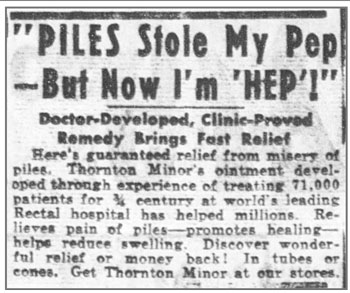
Thornton & Minor treated rectal and colon ailments, including piles (hemorrhoids).
Thornton & Minor converted the hotel into a 300-bed hospital. Patients had previously been forced to stay in hotels near its facilities.
In 1957, Thornton & Minor moved to Excelsior Springs.
The following year, the building became the regional office for the Veterans Administration. By the late 1960s it had again found a new use as the Mission East Nursing Home. Jackson County operated the facility until the mid 1970s when it transferred indigent patients to the Jackson County Public Hospital. And in 1977, the state briefly considered turning the building into a dormitory-style state prison, but that plan never materialized.
Other Homes and Building on the Block
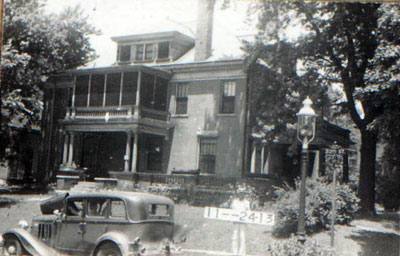
Perhaps the most lavish home on the block stood at 3240 Harrison, appearing on an early map from 1897-1907. In 1910, the Charles J. Schmelzer family lived in the home. The J.F. Schmelzer and Sons Arms Company moved to Kansas City in 1885 and sold athletic goods, firearms, toys, and children’s vehicles until 1928. That home later became a rooming house, and in 1964, the owners advertised furnished rooms for rent at $30. The home is no longer there.
The rest of the block consisted of single-family homes, small hotels, and apartments. The photos below show the buildings as they looked in 1940. Most are still standing today, with a line of old homes lining Campbell Street (those marked 18-26 in the slideshow), along 33rd Street (numbered 14-17) and on Harrison (numbered 5-13).
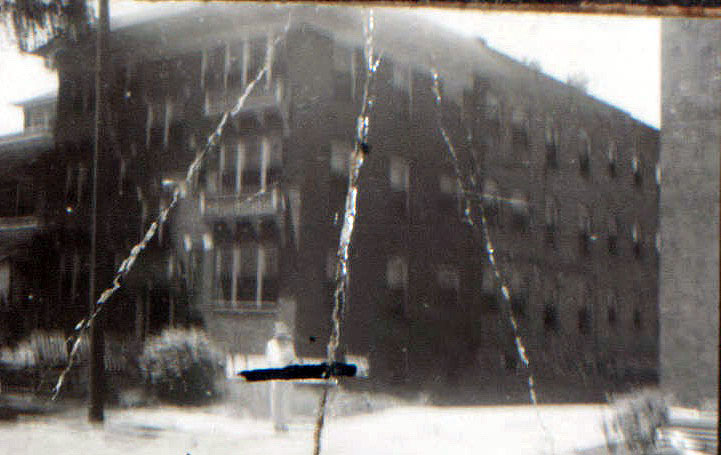
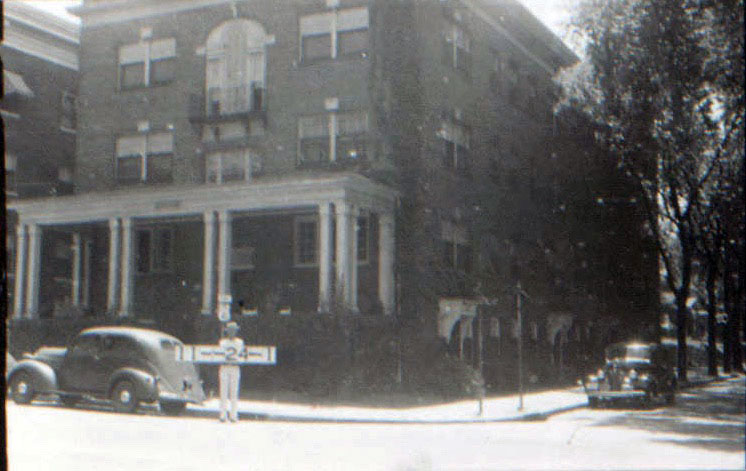

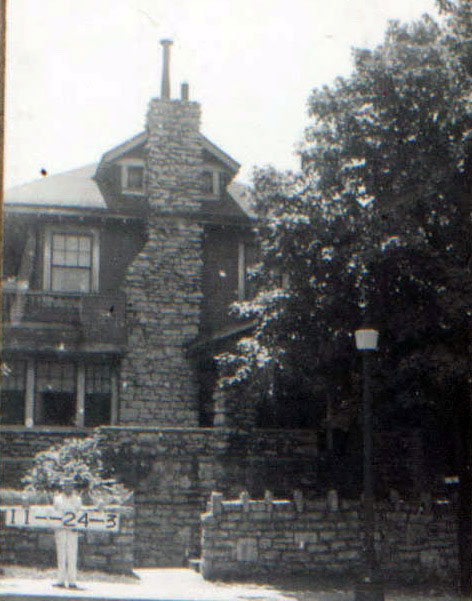

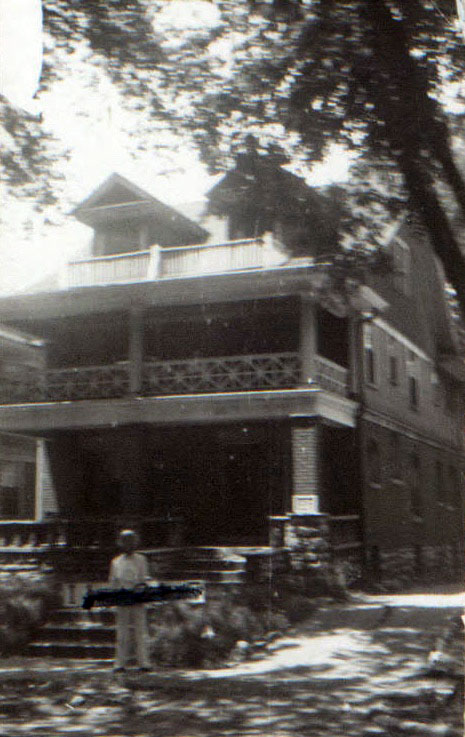
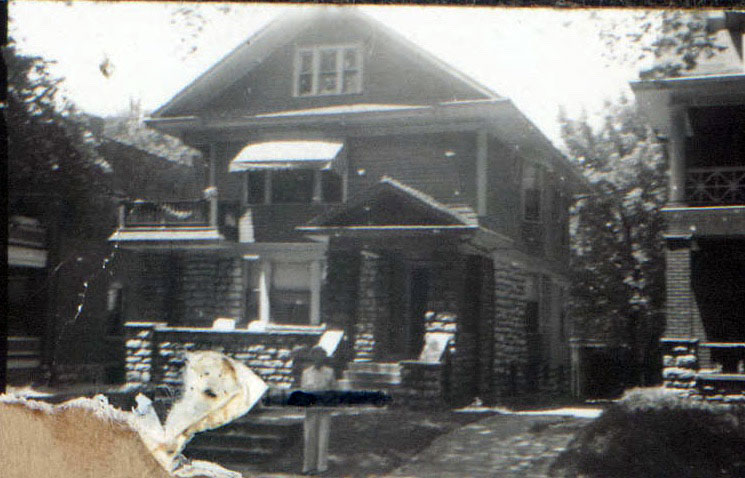
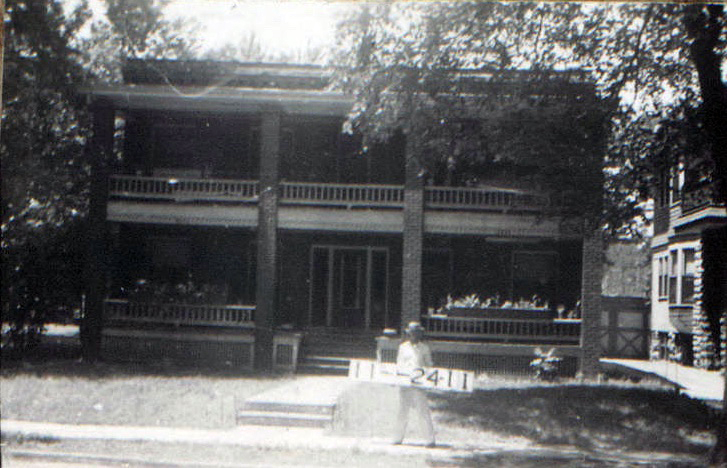
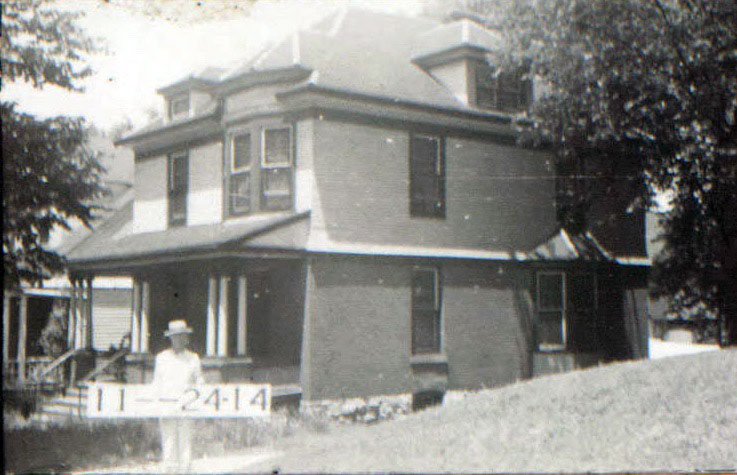
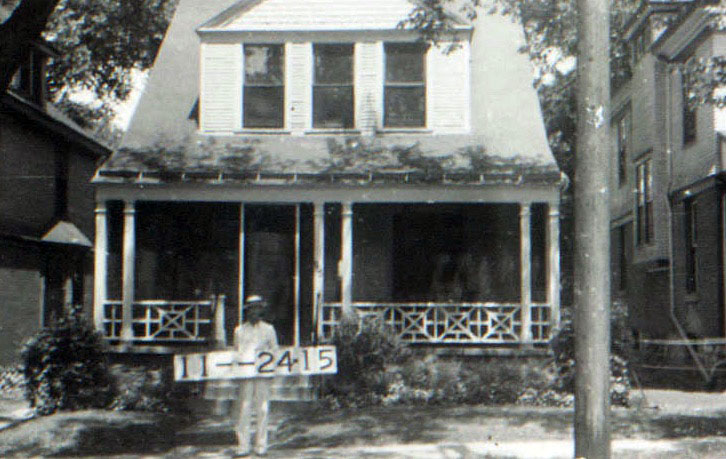
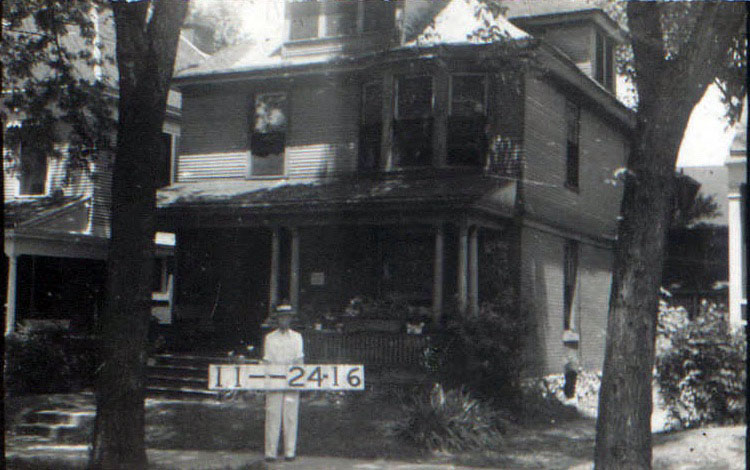

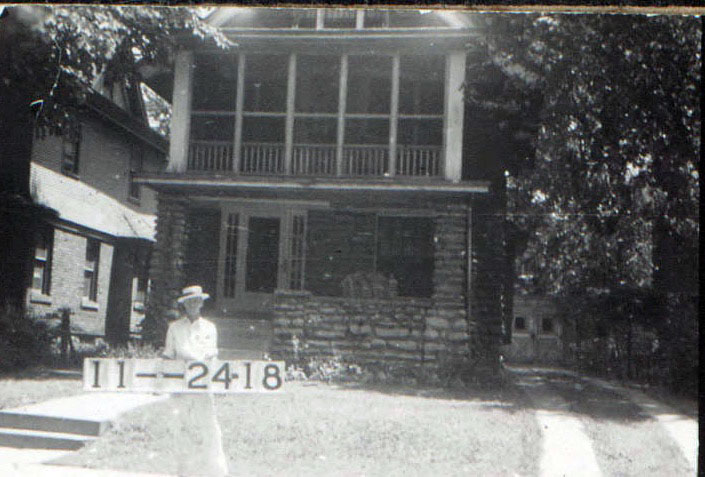
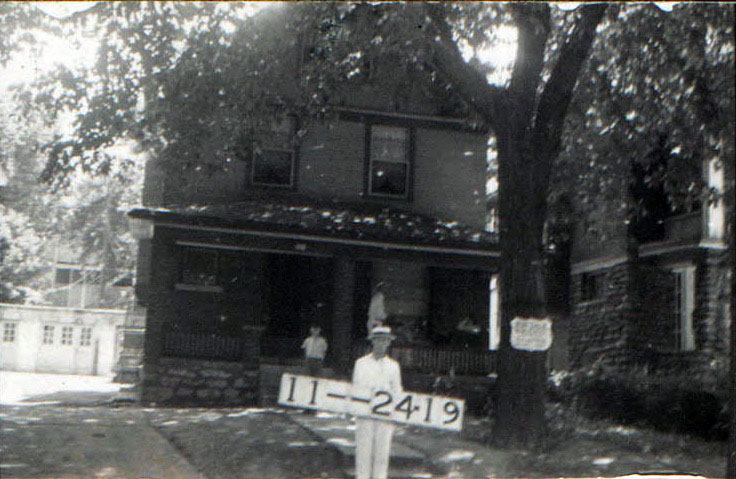
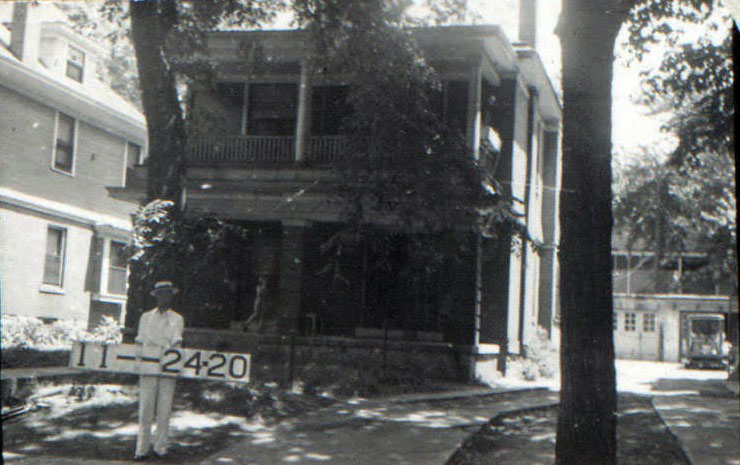
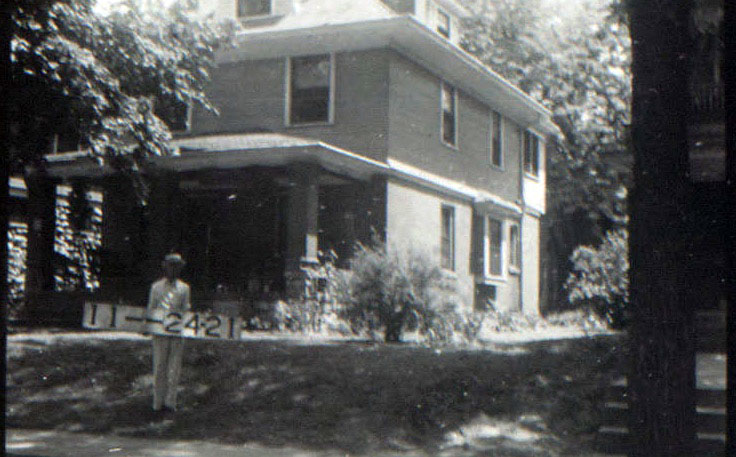
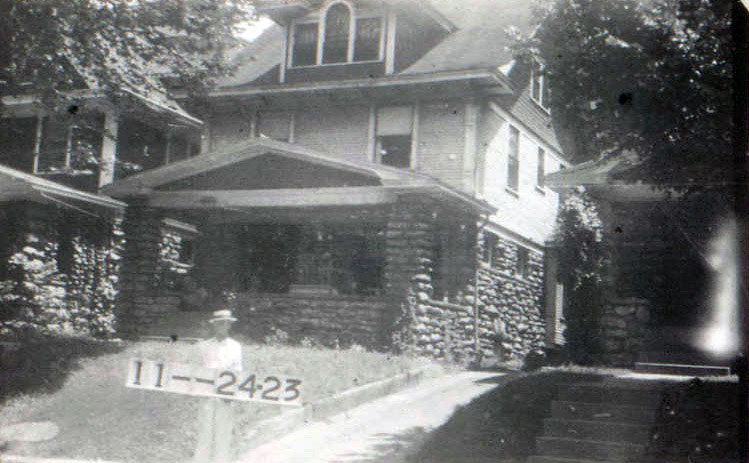
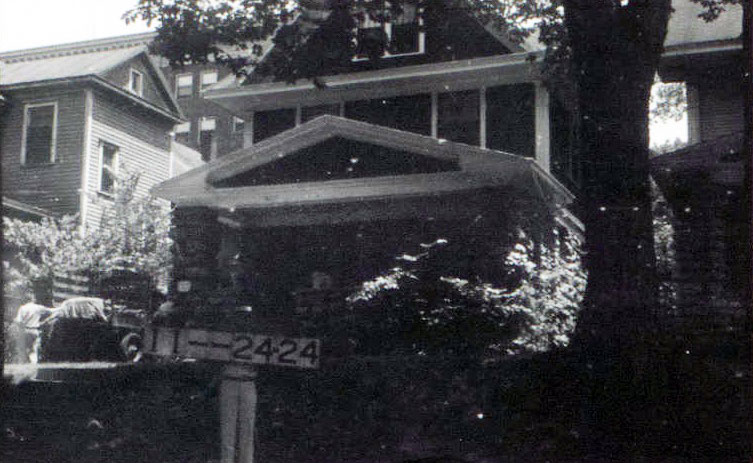
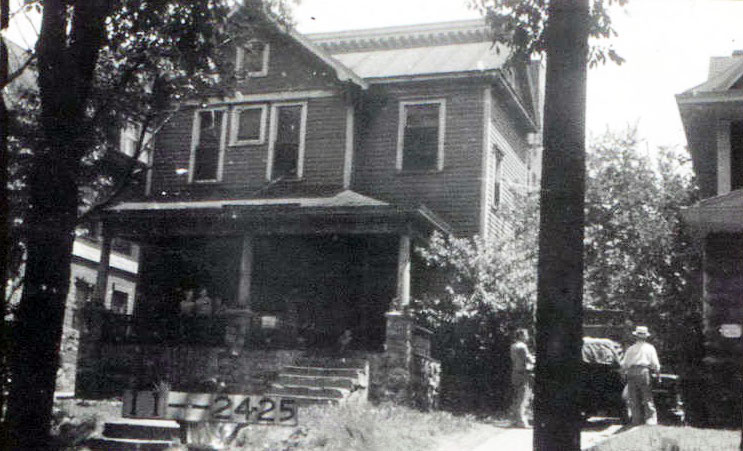
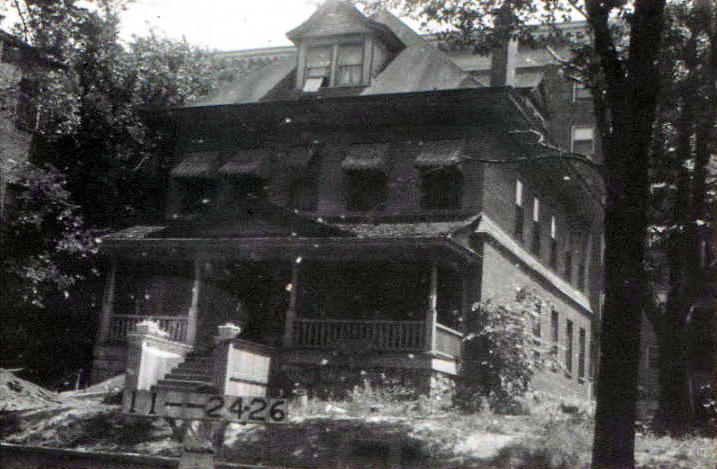
Historic photos courtesy Kansas City Public Library/Missouri Valley Special Collections.
Leave a Reply